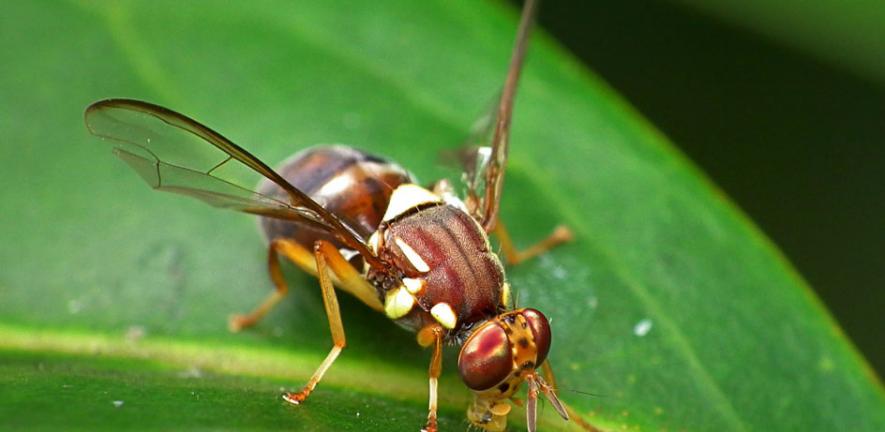
There are over 15 million people suffering from Alzheimer's disease globally and the current cost to the economy represents at least one per cent of gross national product.
There are over 15 million people suffering from Alzheimer's disease globally and the current cost to the economy represents at least one per cent of gross national product.
Working with Drosophila allows us to perform powerful genetic experiments. In particular we have used a library of 3,000 randomly-mutated fly lines to find out which genes when turned on, or off, can make the fly resistant to the toxic effects of the Ab peptide.
Modern medicine and the science of public health have improved the lot of the Common Man and his life expectancy is gradually increasing. While this is to be commended, it has several unfortunate consequences; arguably easiest to solve is the pensions crisis, more difficult to combat is the threat of neurodegenerative diseases. Alzheimer's is the most common of these, causing up to half of all cases of progressive cognitive decline or dementia.
Medical research in the 21st century seeks to understand disease at the molecular level; by identifying the molecules that cause disease, and by understanding their interactions, it is most likely that we will be able to design new therapeutic interventions. This discipline of molecular medicine has yielded up a specific peptide (a small protein, called Ab) that accumulates in patients with Alzheimer's disease.
A highly ordered molecular process of Ab aggregation and deposition in the brain results in the death of neurones and the consequent loss of cognitive function. However the identification of Ab as a molecular culprit has not yet brought with it a raft of new drugs. Therapies aimed at preventing the production of the Ab peptide have been dogged with problematic side-effects and for this reason the pharmaceutical companies (we are collaborating with Merck & Co. Inc) need fresh drug targets.
We are tackling this problem by making a model of Alzheimer's disease in the fruit fly (Drosophila melanogaster) by giving the fly the gene for the human Ab peptide. The flies produce the toxic peptide in their brains and suffer consequences that resemble the human disease. As the Ab peptide accumulates in flies' brains we see behavioural deficits (the flies do not climb up their tubes normally) and their life span is foreshortened. We can even show that the flies have a poor memory – one of the characteristics of the human disease.
Working with Drosophila allows us to perform powerful genetic experiments. In particular we have used a library of 3,000 randomly-mutated fly lines to find out which genes when turned on, or off, can make the fly resistant to the toxic effects of the Ab peptide. We have done this screening experiment and now have a list of 21 genes that, when turned on, protect the fly from Alzheimer's disease. Some of the genes are well known and provide reassurance that the fly is reflecting the known toxic processes that occur in Alzheimer's disease. Other genes are novel and it is these “hits” that provide the hope for new therapies.
Although the fly has only 14,000 genes (as compared to the human's 40,000) a survey of the literature shows that about 75 per cent of disease-causing genes in humans have a direct insect equivalent. We are now taking our research out of the fly and using cell culture to verify that the human equivalents of the fly genes are also effective at protecting human cells. It is our expectation that drugs mimicking the effects of these genes will provide the next generation of therapies to halt the relentless progression of Alzheimer's disease.
Dr Damian Crowther (dcc26@hermes.cam.ac.uk), Department of Genetics/Cambridge Institute for Medical Research
This work is licensed under a Creative Commons Licence. If you use this content on your site please link back to this page.





